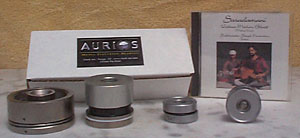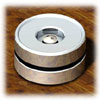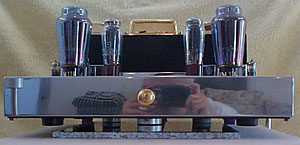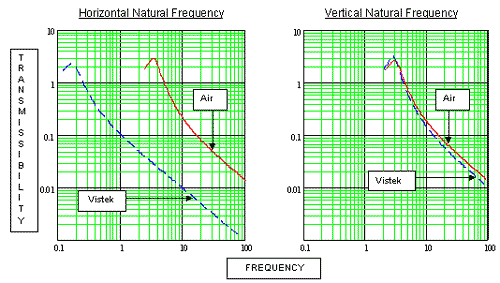![[SoundStage!]](../sslogo3.gif) The Y-Files The Y-FilesBack Issue Article |
||
July 2000 Audible Oreos -- Sonic Sugar? Audio, voodoo and other connections Remember the flick Men in Black?
These secret agents with surgically removed fingerprints and no IDs sported way-cool
sunglasses and black designer threads. They monitored and occasionally exterminated
non-resident aliens from various galaxies. They also had the very nifty, albeit
irreversible, memory-eraser gadget that turned Tommy Lee Jones’ super agent into an
average citizen in the end. Coming soon to a theater near you? Try an audio dealer instead. Pop quiz: What do Silicon Valley, the biotech industry and audio have in common? Walk away now if you already knew the correct answer. Ditto if you cheated by reading ahead. Remove your haughty omniscient self before your ego blows up like a toxic pufferfish. Don’t turn the rest of us nail-biting late bloomers into insecure zombies. You may not know this but Haitian voodoo doctors do occasionally kill people and then revive them afterwards into the living dead. It’s done with a secret potion that induces suspended animation or apparent medical death. This is immediately followed by live burials, which onlookers mistake for deep-sixing truly deceased people. Reanimation is contingent upon opening the grave in time to administer the antidote. The zombie-potion’s main active ingredient is pufferfish toxin. The antidote is the exclusive providence and secret of the witch doctors. NASA would love to get into the zombie business -- suspended animation might work great for long interstellar flights if it can be induced under controlled circumstances and reversed at will. What about microchip manufacture, gene-splicing and audio, you want to know? Where do they overlap? The answer of course is the need to protect against vibrational contamination. Let’s ponder the proposed connection between these seemingly disparate venues together. Witch doctor goodbye; we’ll find our own antidote -- against vibration, not puffed-up fish. We might bury some notions in the process though. Maybe we’ll even revive a few previously discarded ones. Audio voodoo full steam ahead. Vistek Let’s reflect on ultra-high-resolution atomic-force and electron-scanning microscopes. Such devices are part and parcel of genetic and viral research. They are extremely susceptible to vibration. They are violently impacted by physical or airborne vibration. Such micro resonances might remain invisible to the naked eye. But on a subatomic scale, they constitute the equivalent of massive optical earthquakes. This is true also for photolithography machines that etch the silicon wafers into circuit boards called microchips. They require "clean room" environments that are unaffected by physical movement disturbances no matter how minuscule. How minuscule are we talking? Current microelectronics technology allows the manufacture of circuit trace widths of 1/2 micron. One micron is the width of a human hair sliced into 1000 equal-width strands. The industry now has its sights set on 0.1-micron trace widths to usher in the next generation of super-compact speed-freak chips. Do you begin to understand the precision required by which the "circuit trace burners" have to be moved in relation to the silicon substrate -- or vice versa -- to manufacture the multiple-layer micro circuit boards? Contrary to audiophile notions, such scanning or circuit-manufacturing devices are not necessarily bolted to solid slabs of concrete, marble or granite. Neither are they de-coupled from the substructure via precision-machined cones of secret geometries. How then are they shielded against extraneous vibration, pray tell? They sit on multi-axis isolators developed and manufactured by the Tempe, Arizona-based Vistek, Inc. These bearings achieve total isolation control, equivalent to riding on air but active along multiple vectors. Multi-axis refers to the variable left/right, front/back, up/down and tilt planes of pitch and yaw upon which a physical object can change its spatial relationship to a fixed point. By suppressing transmission of extraneous energy, these devices allow whatever sits on them to operate in a virtual vibration vacuum -- almost nothing gets to them. Do you suffer a nagging spouse? A music lover and audiophile inside Vistek experimented with isolation devices like the Vibraplane and bicycle inner tubes. He confirmed their reputed benign effects on audio playback in the home for himself. He thus became instantly convinced that vibration in the audio chain truly is a condition requiring control. But he didn’t much like the looks of the inner tubes under his gear. The price and fixed size of the Vibraplane proved equally unattractive. Then inspiration hit like a bolt of lightning at CES 2000. His firm’s unique multi-axis isolation bearings worked wonders for highly sensitive imaging machines. Couldn’t they be adapted to audio/video use? If an electron-scanning microscope could be isolated from vibration to perform unhampered and as intended, shouldn’t a CD player or amplifier benefit equally as the Vibraplane air suspension already suggested? The audible cookie and its baker
Sir Goff, no scoff, added the proverbial irrefutable offer. If I couldn’t hear the difference the Aurios effected -- or if I thought said difference too inconsequential or non-benign -- he’d be out of my house in a hurry. After the very first tune no less. I don’t know who the hell had hipped Craig to solicit this writer with such a no-hassle guarantee. It overcame my well-groomed cynicism toward most tweakoid audio matters in a heartbeat. Properly bested, I said yes of course. I commanded Mr. Goff to come over pronto and dazzle the living daylights out of me. Should his volunteered option turn self-fulfilling prophecy, the prospect of being authorized to unceremoniously boot him out of my place in a hurry proved, I admit, only further inducement. So much for sterile objectivity. Great fun hung in the rafters waiting to spread its wings. Could, would and should the MIBs work? Or need I lubricate my creaky door hinges in advance to prepare for Craig’s speedy delivery back into the outside world to haunt some other audiophile sucka? I polished my boots, sharpened their toe caps to a good point and waited. I was ready for Mister Goff and his cookies. Puckering, coupling and other wily notions Let’s address the should first. I have never quite cottoned onto the audiophile religion’s third commandment "Ye shall cone". It doesn’t make sense to me. Why would vibrational energy drain out of a component in mysterious one-way fashion? Why wouldn’t other energy seep back into the equipment the same way it supposedly left? The operative term that audiophiles use is coupling. But they use this term as it suits them. Spikes under speakers couple them to the floor. Cones under components de-couple them from shelves. Hello? You can’t expect to reverse mechanical polarity by using the exact same device and practice -- decide whether you’re coupling or uncoupling!
If you’re older than 13, you know that when you’re coupled to someone, whatever motion you effect affects the other. You feel this in turn, and the stimulating dance continues -- for a long while if you’re lucky. In audio, this inter-dependence is mysteriously transcended. The law of bi-directional energy exchange suddenly evaporates in a puff of holy smoke. Do you smell a rat? Or is it lizard shit? Coupling a component to a supporting surface like a shelf -- via cone or puck or spike -- is said to mysteriously obliterate any "mechanical crosstalk" between the component and its shelf. The offensive micro resonances supposedly drain from the box into the support. This is claimed despite the acknowledged fact that each shelf possesses its own inherent resonance. Hold a shelf in your hand and knock on it. If you took an accelerometer, you could measure the initial peak and subsequent decay of the physical motion you caused with your rap. And of course, you’d hear it too. In fact, whatever metal, wood or other support member or upright bar the shelf itself is attached to, even if it’s via spike or rubber bumper, has a natural resonance. Ditto for the very floor upon which the entire rack rests. Why wouldn’t all these diverse sonic signatures of resonant frequencies feed back into the equipment like one great big unhappy cacophony utterly unrelated to the actual music signal? Friends, the coupled component ends up with more, not less, mechanical vibration than it produced on its own. Could this be the reason why all pucks and cones sound different, literally having and injecting a sound of their own? Because, if the principle was operational in true one-way fashion only, it shouldn’t matter whether the "drain pipe" was made out of metal, plastic or wood, right? The bad vibes would just flush out of the system, literally going down the drain. The harsh sound of one arse puckering Audiophiles can attest that glass, ceramic, metal, composite, granite, carbon and other cones each possess their own distinct and unique sonic signature. They all make a system sound different. This suggests that they each add something rather than remove, inject rather than drain. In fact, they act as mechanical-transmission devices. Users have rightfully noted that such devices sound harsh and unmusical if too many are used. A reverse phenomenon kicks in that’s only undone by removing the extra cones or pucks. Now if the draining of vibration were the agreed-upon objective, how could one ever drain too much? There is nothing on the other side of empty! There is no negative emptiness, no negative state of inertness. Let’s take this thought to its ultimate conclusion: If a limited amount of vibration required the right/fixed amount of drains/pucks, each successive additional drain should only do one of two things: nothing (zero energy left to drain) or an acceleration of the phenomenon (more downspouts equals faster energy release). What should happen under no circumstances is too much puckering -- of arse or gear. Too much suggests an accumulative negative back flow. In fact, this is exactly what happens. Forget the drain myth -- flush it down the toilet. Pucks and cones are coupling devices. The more devices you add, the more doors you open to set up a two-way traffic exchange. What should remain isolated resonances are instead allowed to interact with each other. This sets up compound interference patterns that create mechanical inter-modulation distortion. Think about a tuning fork humming at full amplitude. Now set it atop a table. It immediately gets louder because it’s now coupled to a larger resonating body. Do you have a second fork of equal pitch? Set it on the table as well. It will go off on its own and increase the tone’s amplitude. Add another ten. This effect multiplies. Even if the pitch of a secondary fork were different from the rest but harmonically related, it’d still ring but obviously at a lesser amplitude. However, it would back-feed to all the others that are toning the fundamental, to selectively change their harmonic content by addition and subtraction. This is what’s called inter-modulation distortion -- the sum becomes greater than its combined parts. While we’re mentioning tuning forks, think about a marble violin. Without a chassis to sympathetically enhance its string vibrations, such a violin would sound like a rubber duck -- dead. Maybe a certain amount of self-contained resonance in an audio component is an actual and very important element of its sound. Even though you can’t, why would you even want to "drain" that? You’d never hear what your component really sounds like on its own. The soft sound of one arse relaxing If a certain amount of micro-vibrational activity were good, benign and necessary, wouldn’t equipment sound better if one could listen to a system under zero-gravity conditions? Each component would then float in full suspension. All interactive vibrational crosstalk would be eliminated, replaced by full inter-component isolation. This would liberate the equipment to express its inherent, designed-in vibrational signature freely. To eschew mechanical coupling allows this component to impose its own sonic stamp only onto the signal, while said signal is processed through the component. Isolation eliminates the contagious hand-me-down of this signature by mechanical means -- coupling -- whereby components begin to communicate vibrationally with each other. To summarize: Mechanical coupling changes the resonant/vibratory signature of each device in the connecting chain. It’s an additive, not subtractive, phenomenon, as the snake-handlers would have you believe. Components coupled to each other or their supportive substructures vibrate more than they do on their own. Do you imagine this might just possibly affect aural performance adversely? Never mind different cone geometries. They merely set up different internal reflection patterns. Geometry per se does not undo the fact that cones or pucks by any other name remain coupling devices, not de-couplers or drains. To vibe or not to vibe We’re postulating now a new paradigm. Better sound might be achieved when components are free to exhibit their own native resonant behavior. Leave them alone, completely. Create a mechanical vacuum. This requires avoidance of coupling, whether to each other or outside load-bearing structures. Damping or mass loading are secondary options that should be explored by all means. However, this should be done post-isolation, to evaluate what a component truly sounds like on its own. For example, mass loading causes a downshifting of the resonant frequency of whatever the load is attached to. Think of it as a fine-tuning option. Or call it second-guessing the designer if he had the working environment in which to evaluate, design and voice his component in isolation. Experiment with damping or mass loading, but do it after the component has been effectively isolated. Now, if isolation proved to be the means by which to unlock a component’s true self-sound -- the Original Face of Zen, our new audio paradigm of Contained Auto-Resonance is Good -- then inserting isolation devices like the Aurios MIBs into a system should increase the effect ad infinitum. Well, within reason. You would add them until each and every mechanical interface between a system’s components and their supports was treated. To go further would be meaningless and a waste of money. Three Aurios per component assures the firmest footing and should be sufficient. Here’s the good news. This approach should never yield a point of over-doing as long as you stay within these parameters. I can think of only one theoretical exception. Mr. Goff concurs. A component, such as a full-range loudspeaker, could have been deliberately designed to account for massive coupling with the floor. Un-coupling it via isolation devices might then conceivably thin out the bass. To offset the loss of mechanical coupling, you could move the speakers closer to the rear wall to increase the acoustical coupling. Besides this theoretical loophole, any other ill effects in the isolation game would negate our postulate that isolated auto-resonance in a system will optimize its sonic behavior. We know it’s true for musical instruments. They are always designed such that the resonant structure of the instrument responsible for its unique sound -- the body -- is as free from interference as possible to vibrate unimpeded. A cello is spiked to the floor to avoid damping its wooden resonator. Can you imagine a cello directly on the ground? A clarinet or saxophone is damped minimally via the teeth and lip connection of the mouthpiece and the thumb rest. Supporting it on the knee changes its sound. A violin is often played with a neckpiece to reduce large-scale direct contact with the shoulder. Maybe audio and video devices also prefer to operate in relative immunity from their surroundings, to resonate, shimmy and shake without interference.
Description What is an Aurios? Balls of undisclosed composition ride inside a thin retaining plastic wafer that connects two circular precision-machined steel plates with elevated, minimum-contact rims facing outwards. The three wafers are held together by a central screw. This screw is pre-tightened to guarantee proper freedom of motion for the balls that travel inside a slightly conical raceway. The profile of this raceway creates a self-centering effect -- if the bearing is level, it always aligns itself after lateral motion subsides. The outside screw end features a little dimple to seat a speaker’s spike if desired. The Aurios MIB can be used face up or down. One wafer has a central recess to contain the central screw head. And that’s it, folks. I took one apart. Simplicity rules. Ingenious -- why didn’t I think of it? Yes, it’s one of those zipper, Velcro, Slurpy-straw kind of affairs. But don’t let that fool you. To have the idea required considerable insight into the real physics of vibration propagation. To execute it meant having access to massive mechanical-engineering resources. Indeed, this device relies on precision-tooling and first-rate components to create the load-bearing capability, virtual indestructibility and mirror-polishing which insures that the inside tread spacing for the balls is baby's-butt smooth and free of friction. Did I mention a set of three Aurios could support up to 1000 pounds? Yes, you read this right, one thousand pounds. Want to try mass-loading your CD player with gold bullion? Go right ahead. You’d have to heist quite a vault to dominate the Aurios in bank-robber fashion. Never mind that your CD player would squash like a flattened mosquito long before you schlepped all your spare ingots to safety. Did I say vault? A set of three Aurios will set you back $299. Installation There’s nothing to do except
provide the Aurios MIBs with a perfectly flat, hard and level surface. This is the golden
opportunity to wallow in audiophile angst and indulge the PP-mission of precision and
perfection. Each MIB wants to be centered, with minimal offset
between upper and lower plate. This retains maximum freedom of lateral motion. In other
words, you don’t want one of the bearings to prematurely hit its stop or bind up
because it either isn’t level or installed off-center. Seismic shocks Earthquake aficionados know about S- and P-waves. Seismic activity is measured directionally, both vertically and horizontally. The short, abrupt quakes are called P-waves that usually go up and down. The drawn-out, snaky-sneaky, seasickness rollers are typically the horizontal S-waves; they go sideways. Why do they last longer? Because gravity affects up-down movement on this planet. Gravity promotes attenuation of seismic vertical amplitudes in a hurry -- what goes up must come down. Gravity’s effect is less pronounced on horizontal amplitudes, which is why everyone always wants to know about an earthquake’s epicenter. The heavier the initial P-wave impact, the farther out the sideways ripples spread before they run their course and expire. This can mean a healthy 100-mile radius. Pretty frightening but also pretty basic physics, right? Incidentally, the same happens when you drop a rock into still water. The big circular wave from the initial impact dies down very quickly, but the sideways ripples continue on for a long time. The same happens in an audio system. Gravity automatically damps vertical vibrational activity to attenuate it quickly. Less so for horizontal pulses, which are suppressed more slowly. Enter the Aurios device. It offers 1/10" of lateral freedom in a circular horizontal plane to address the main area of micro-vibrational impact. What we have here then is a device that is minimally coupled to its support structure below, producing about 90% de-coupling/isolation versus 10% coupling/damping. A thought occurred to me then. If coupling was the enemy, why not shrink the Aurios? The smaller the balls, the smaller the contact area. Contact equals coupling. Reduce contact, minimize coupling, minimize mechanical crosstalk, increase isolation efficiency. When I turned to Mr. Goff to convey this priceless piece of insight and state my consulting fee, he countered that the next generation Aurios is already well past the drawing-board stage. The Micros will be the size of a nickel or thereabouts in diameter and 1/2" high. They are designed for internal use in components, say for transformers mounts, circuit board spacers, CD transports -- in short, anything that generates or suffers from micro-vibrational activity and thus might benefit from mechanical isolation inside a component. Manufacturers, take note! Rather than spending your money on impressive-looking cases, you might be able to achieve more with less. You might really squelch the evil vibes that your massive casework seems to address but maybe doesn’t as effectively or cheaply. Show and tell The short of it? The Aurios work, but you'll have to wait for the full SoundStage! review to find out most of the details. Vistek likens the Aurios to a mechanical white-noise filter. This goes a bit over my head. I’ve been shown actual graphs though where the effects of the device have been measured with precision equipment. Until the patent-pending process finalizes, most of this documentation remains proprietary but I’ve been allowed to use the following curve for now.
This chart shows the difference in isolation efficiency between a Vistek VIP 300 multi-axis device and the equivalent table top air platform. The horizontal axis equals frequency in Hz, 0.1 to 100, the vertical axis shows transmissibility from 0 to a factor of 10. A shaker table generates motion. What is measured with an accelerometer is the transmitted vibration in the isolated device. The higher the isolation efficiency, the lower the measurable energy. Detailed graphs and charts generated by independent research labs comparing the actual Aurios MIB to currently available audiophile isolation/damping/coupling devices will be online at www.vistek-inc.com. I’d like to stress the credentials of the folks involved with this product. The Vistek-Aurios team strikes me as the anti-vibration task force equivalent to the engineers of Analysis Plus. These cable gents are currently causing a few of their fellow wire manufacturers heart burn with the superiority of their very affordable but exceedingly well-designed cables. See my prior article on Analysis Plus. Like Analysis Plus, Vistek focuses on continued product development and improvement. All of Vistek’s products are protected by US and international patents and patents pending. Vistek. Inc.’s "invent-it" brain is Zoltan Kemeny, Hungarian expatriate with an MS in structural engineering and a BS in construction engineering. While living in Spain, he came up with a pre-cast concrete wall system and started a company around it. He is a registered architect and PE in Hungary, a certified highway-bridge inspector in the USDOT and a member of the structural engineering association of Arizona as well as the American Institute of Architects and the Earthquake Engineering Research Institute. Vistek’s resident business, marketing and development muscle is Paul Attaway, who worked for the MM Systems Corporation in architectural building material manufacture before he and Kemeny started an internal seismic design division that they eventually purchased to break off. While researching the demand for seismic-risk-mitigation technology in the semiconductor industry in 1997, Attaway discovered the demand for superior micro-vibration control in this industry. Vistek was formed in June 1997 to lay the corporate groundwork for the emerging breakthrough technology in this field. Craig Goff’s expertise in mechanical engineering as well as a thorough background in the audio retail and manufacturing fields resulted in the "Aurios Project", which is a direct outgrowth of Vistek’s existing research and products. Solid science! Mechanical integrity and isolation affect the actual signal that finally arrives at our ears to an extent that is unbelievable until you’ve heard the difference. I think I understand why it works now, but the results still seem entirely off the scale. It’s frankly quite mind-blowing if you’re not a smart cookie like Mr. Goff who, intimately familiar with microchip manufacture, knew a priori what this type of isolation device would accomplish. It’s nothing more than pure and simple physics, identifying the problem and properly engineering the solution. The Aurios bearing is the first true de-coupler since the advent of the Vibraplane. Now that I’ve heard the results, I’m convinced that de-coupling rather than coupling is where it’s at! ...Srajan Ebaen
|
||
|
||
![[SoundStage!]](../sslogo3.gif) All Contents All ContentsCopyright © 2000 SoundStage! All Rights Reserved |
 These MIBs seemed to live in a heady world
too far removed from ours to be real. Alas, there’s now a second wave of MIBs busting
through town that are very much of this world.
These MIBs seemed to live in a heady world
too far removed from ours to be real. Alas, there’s now a second wave of MIBs busting
through town that are very much of this world. The Vistek Aurios
Media Isolation Bearing, Aurios MIB for short and Aurios for even shorter, is the rapid
outcome of applied R&D and engineering to the existing, industrial-application
isolators by the same company. The MIB is the direct answer to one Craig Goff’s
crystalline moment of epiphany. This same fellow called me one sunny day to introduce
himself. He described the device and asked whether I wanted to evaluate what sounded like
Oreo cookies over the telephone. I was immediately game. I love crumpets. His offer was
compelling. He’d bring enough Aurios to "float" my entire system -- each
single component, speakers, even the pARTicular rack that my components sit on. Overheated
images flashed like a strobe through my mind. Should I also have him bring a few of the
big howitzer types to float my house like certain skyscrapers that sit on rollers to
survive earthquakes? Should I put these bearings underneath my listening chair? Should I
mimic Rodin’s famous thinker, chin on thumb, elbow on knee to further de-couple my
brain from floor-borne vibes?
The Vistek Aurios
Media Isolation Bearing, Aurios MIB for short and Aurios for even shorter, is the rapid
outcome of applied R&D and engineering to the existing, industrial-application
isolators by the same company. The MIB is the direct answer to one Craig Goff’s
crystalline moment of epiphany. This same fellow called me one sunny day to introduce
himself. He described the device and asked whether I wanted to evaluate what sounded like
Oreo cookies over the telephone. I was immediately game. I love crumpets. His offer was
compelling. He’d bring enough Aurios to "float" my entire system -- each
single component, speakers, even the pARTicular rack that my components sit on. Overheated
images flashed like a strobe through my mind. Should I also have him bring a few of the
big howitzer types to float my house like certain skyscrapers that sit on rollers to
survive earthquakes? Should I put these bearings underneath my listening chair? Should I
mimic Rodin’s famous thinker, chin on thumb, elbow on knee to further de-couple my
brain from floor-borne vibes?
 Before we let
theory and reality collide to see who survives the crash and emerges the winner by default
-- puckered, coned, isolated or au naturelle -- here’s a look at the Aurios
device to understand its mechanical workings.
Before we let
theory and reality collide to see who survives the crash and emerges the winner by default
-- puckered, coned, isolated or au naturelle -- here’s a look at the Aurios
device to understand its mechanical workings.  It’s very disconcerting to eventually float your 150-pound
speakers. Now the very slightest of feathery touches will cause them to g-l-i-d-e with
that most amazing sense of weightless ease. It may require repeated trial and error until
each MIB is located just so. You know when it’s right. It’s patently obvious.
Craig Goff had a hot tip for those wanting a hard, smooth and flat surface -- and cheap.
And good-looking. Home Depot’s one-foot-square marble tiles, purchased from their
floor tile department at about $2.50 each. If your equipment has such an uneven underside
that direct contact to the MIBs proves unstable or offsets the component’s balance,
you can build an Aurios sandwich with two marble tiles and the MIBs in-between. Set the
component onto the top tile with its regular feet.
It’s very disconcerting to eventually float your 150-pound
speakers. Now the very slightest of feathery touches will cause them to g-l-i-d-e with
that most amazing sense of weightless ease. It may require repeated trial and error until
each MIB is located just so. You know when it’s right. It’s patently obvious.
Craig Goff had a hot tip for those wanting a hard, smooth and flat surface -- and cheap.
And good-looking. Home Depot’s one-foot-square marble tiles, purchased from their
floor tile department at about $2.50 each. If your equipment has such an uneven underside
that direct contact to the MIBs proves unstable or offsets the component’s balance,
you can build an Aurios sandwich with two marble tiles and the MIBs in-between. Set the
component onto the top tile with its regular feet. 